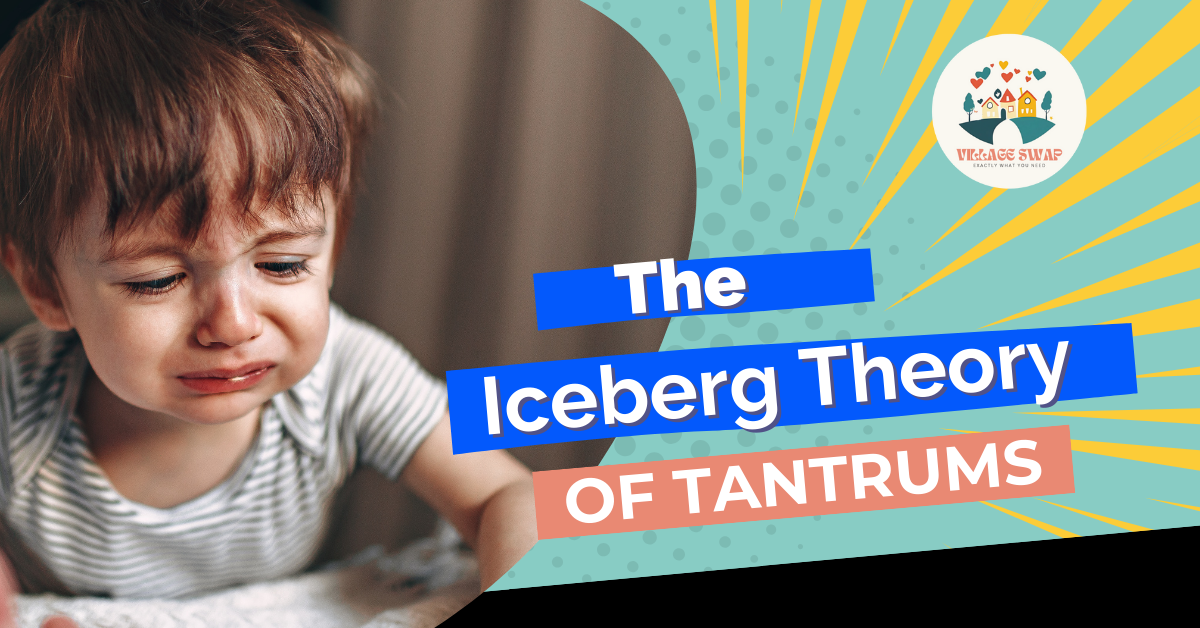Tantrums and the Iceberg

What’s Really Beneath the Surface?
Picture this: it’s a crisp Tuesday morning. Sarah’s in the kitchen, brewing her coffee and flipping toast like a pro. Meanwhile, her three-year-old, Jack, is mid-meltdown over a missing toy dinosaur. One minute he’s asking for toast, the next he’s red-faced, screaming, and sprawled on the floor like a scene from a dramatic mini soap opera.
Sound familiar?
To most, Jack’s reaction seems over the top. But here’s the thing—what we’re seeing is only the surface. A ripple on the water. The real storm? That’s happening deep underneath. Welcome to the Iceberg Theory in child psychology—your new best mate when it comes to decoding meltdowns.
What Is the Iceberg Theory?
Originally coined by writer Ernest Hemingway to describe writing, the Iceberg Theory was later adopted by psychologists to explain human behaviour. At its core? The idea that most of what we show to the world—the behaviours, reactions, tantrums—is just the tip. What lies beneath is a hulking mass of hidden feelings, unmet needs, and unspoken experiences.
When it comes to kids, this theory is golden.
That tantrum? It’s rarely about the toy. It’s about being overtired, overstimulated, anxious, or perhaps missing Mum after a big day at daycare. The toy’s just the spark—what’s beneath is the fuel.
The Anger Iceberg: Emotions Wearing a Mask
Let’s talk about anger—because it’s the emotion we often see in a child’s tantrum. But anger is usually a disguise. According to the Anger Iceberg Model (Gottman, 1997; adapted by the Gottman Institute), visible anger often masks deeper, more vulnerable emotions like sadness, fear, disappointment, shame, or confusion.
In Jack’s case? His tears might really be about a tough morning, a rushed goodbye, or a lack of control in his tiny, unpredictable world.
The trick is learning to dive below the surface.
Actionable Tips: Navigating the Waters
1. Pause and Zoom Out
When your child is losing it, it’s tempting to meet chaos with control. Instead, pause. Ask yourself: What’s this behaviour really about? Hunger? Tiredness? Anxiety? A shift in routine?
2. Give Emotions a Name
Young children often don’t know how to explain what they’re feeling. Ask gentle questions like:
“Are you feeling a bit worried?”
“Was it hard to say goodbye this morning?”
By naming the emotion, you help your child feel seen—and you teach them emotional literacy.
3. Validate Before You Correct
Validation isn’t agreeing; it’s acknowledging. Try:
“I can see you’re really frustrated,”
“It’s okay to feel sad when you can’t find your toy.”
This builds trust and tells your child their feelings aren’t too big for you to handle.
4. Stay Calm (Easier Said Than Done, We Know)
According to co-regulation research (Tronick, 2007), children borrow our nervous systems to calm themselves. If we keep our cool, they’re more likely to settle faster.
5. Use the Iceberg as a Visual
For older kids, draw an iceberg together. Talk about what we show versus what we feel. It’s a surprisingly effective empathy-building tool.
6. Seek Support When It’s Needed
If tantrums are persistent, severe, or impacting daily life, seek help from a child psychologist or behavioural therapist. You’re not failing—you’re learning alongside your child.
The Science That Backs This Up
-
The Role of Emotion Regulation in Children’s Development (Eisenberg et al., 2010) highlights how caregiver responses shape emotional resilience.
-
Neurobiology of Emotion Regulation (Thompson, 2011) shows how repeated validation and secure attachment impact brain development.
-
The Anger Iceberg Model by the Gottman Institute is widely used in parenting programs to help decode behavioural triggers.
-
Circle of Security Parenting—based on attachment theory—offers practical tools for identifying emotional needs underneath behaviour.
Where to Learn More
-
Gottman Institute: www.gottman.com – for tools on emotional coaching
-
Kids Helpline: kidshelpline.com.au – Support for parents and children
-
Circle of Security International: www.circleofsecurityinternational.com
-
Books:
-
The Whole-Brain Child by Dr Daniel Siegel & Dr Tina Payne Bryson
-
Parenting from the Inside Out by Dr Daniel Siegel
-
Let’s Keep the Conversation Going
This isn’t a one-size-fits-all situation. We all parent different personalities, in different homes, with different pasts. So let’s talk about it. Head over to the Village Swap Forum and join our conversation:
“What’s really underneath your child’s tantrums?”
You’ll find real stories, shared strategies, and thoughtful exchanges.
Visit the Village Swap discussion forum to continue the conversation.
Final Thought
A tantrum isn’t a failure in discipline—it’s a message. A messy, loud, mascara-smudging message from a small human who’s still learning how to be in the world.
So next time the iceberg rises? Don’t just brace for impact—get curious. There’s magic in what lies beneath.
